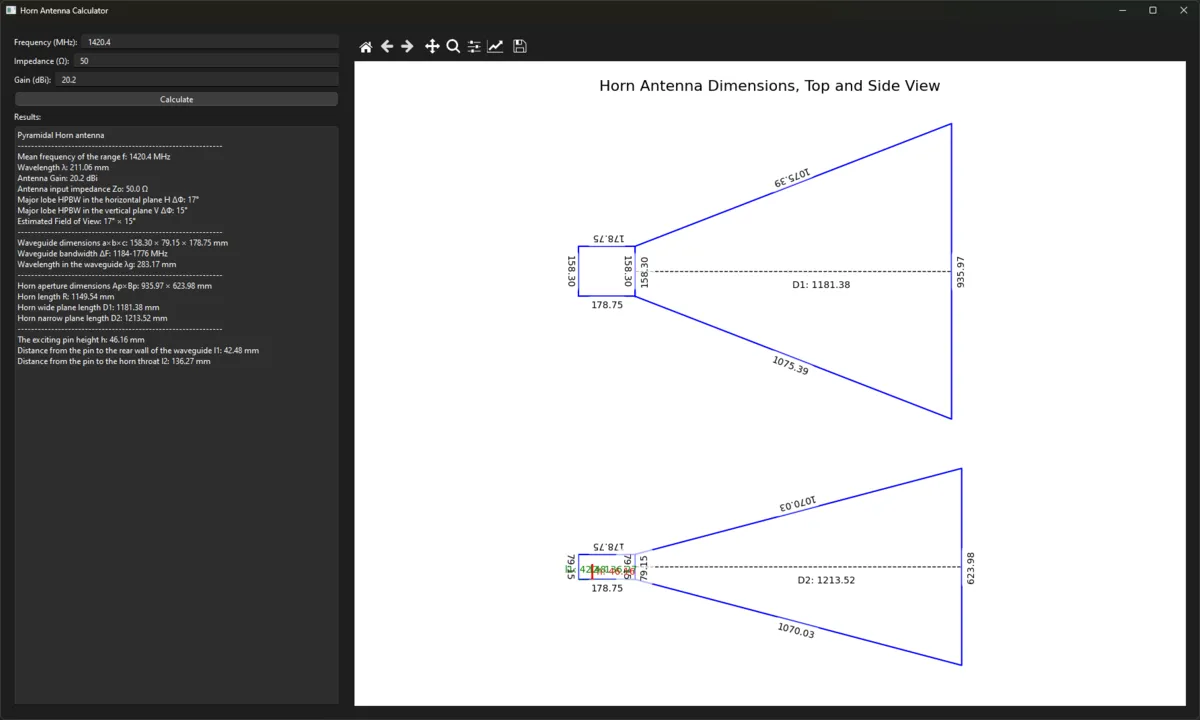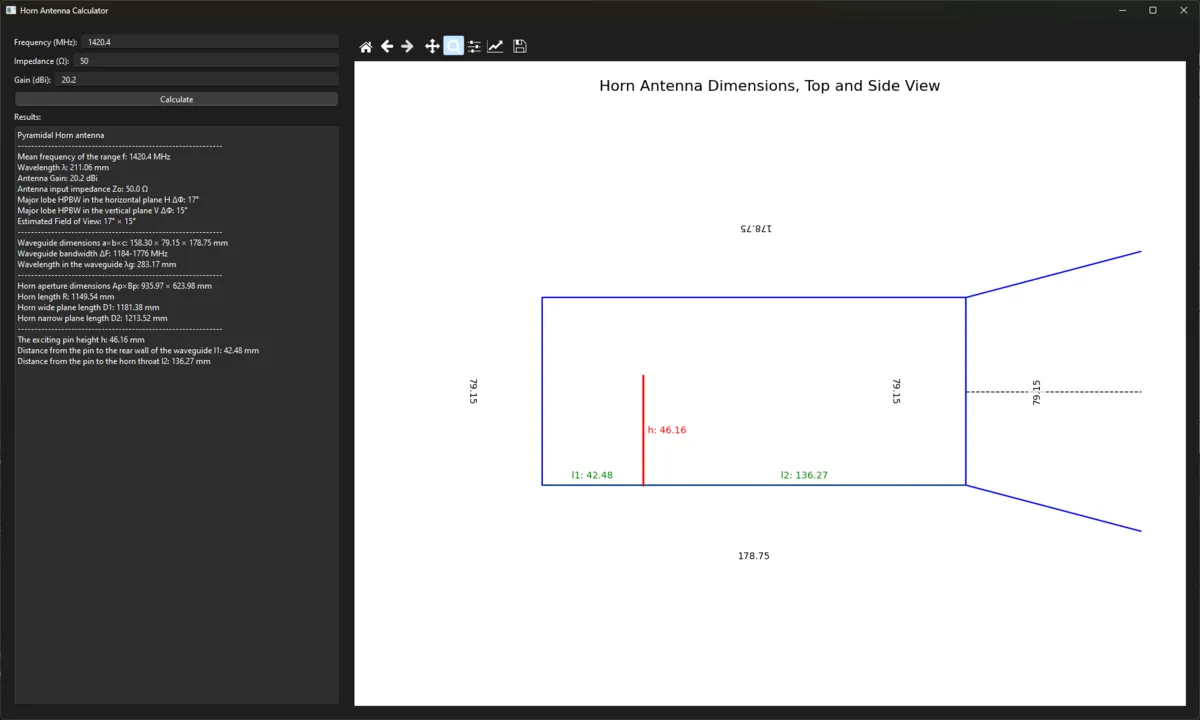Custom Radioastronomy Software
Adventures into SDR-RTL
A quick software tool using matplotlib with Python to procedurally design optimal horn antennas for specific frequency, gain, and impedance parameters.
Original calculations were done at: https://3g-aerial.biz/en/online-calculations/antenna-calculations/horn-antenna-online-calculator
I have added visualization of parts and a GUI to it.
Here you can see the parameters and resulting TOP and SIDE views with the measurements of our ideal final antenna.

Here is also the detail of the SIDE view of the waveguide with probe height and location.

Code: Github
output example for Hydrogen Line 1420.4 MHz central frequency:
Pyramidal Horn antenna
Pyramidal Horn antenna
- Mean frequency of the range f: 1420.4 MHz
- Wavelength λ: 211.06 mm
- Antenna Gain: 20.31635 dBi
- Antenna input impedance Zo: 50.0 Ω
- Major lobe HPBW in the horizontal plane H ΔΦ: 17°
- Major lobe HPBW in the vertical plane V ΔΦ: 15°
- Estimated Field of View: 17° × 15°
- Waveguide dimensions a×b×c: 158.30 × 79.15 × 178.75 mm
- Waveguide bandwidth ΔF: 1184-1776 MHz
- Wavelength in the waveguide λg: 283.17 mm
- Horn aperture dimensions Ар×Вр: 949.26 × 632.84 mm
- Horn length R: 1185.79 mm
- Horn wide plane length D1: 1217.68 mm
- Horn narrow plane length D2: 1250.00 mm
- The exciting pin height h: 46.16 mm
- Distance from the pin to the rear wall of the waveguide l1: 42.48 mm
- Distance from the pin to the horn throat l2: 136.27 mm
I of course plan to simulate it in Ansys HFSS, but that will come later. For now, I will just make one and test it in the field.